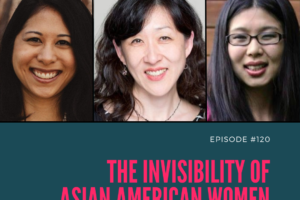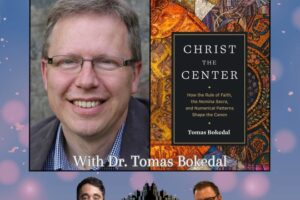In As It Was in the Beginning, Mark D. Owens compares “new creation” concepts in Galatians, 2 Corinthians, and Ephesians through an intertextual analysis that focuses on Old Testament allusions and traditions. He suggests that the three letters exhibit a close correlation in their presentation of “new creation,” and that they demonstrate a dependence on an Isaianic premise of “new exodus” and an Urzeit–Endzeit schema in which eschatological hope demonstrates a typological correspondence with protology. In response to recent studies that have sought to define “new creation” either in anthropological, cosmological, or ecclesiological terms, Owens demonstrates that new creation is a complex notion that cannot be reduced to one of these areas but contains aspects of all three.
Owens begins by examining the tradition of new creation in Isaiah, which he maintains has too frequently been ignored in studies of new creation in the Pauline corpus. This section seeks to demonstrate how “new exodus” in Isaiah should be understood as a complex conception that includes anthropological, cosmological, and ecclesiological concerns (cf. pg. 41). “New exodus” is something of a narrative in Isaiah that includes a close relationship with the restoration of Zion/Jerusalem, links with ANE temple-building traditions, a concern for the salvation of the Gentiles, and the description of the “new heavens and a new earth” in Isa 65–66.
Owens’ next turns to discuss new creation and restoration with other Old Testament and Second Temple texts including Ezekiel, Jeremiah, 1 Enoch, and Jubilees. Though Owens maintains that “Isaiah provides the primary background for understanding new creation in the Pauline corpus” (pg. 44), he also includes discussions of relevant texts in Ezekiel, which “probably played an important role in formulating the understanding of new creation in the Pauline corpus,” (pg. 44) and Jeremiah, because “of the likelihood that new exodus traditions in Isaiah seem to draw upon traditions from within Jeremiah” (pg. 53).
The next chapter moves to examine “new creation” in Gal 6:15 and 2 Cor 5:17. In the discussion of Galatians, Owens particularly points to the complexity of the surrounding passage as one that incorporates anthropology, cosmology, and ecclesiology. As “2 Cor 5:17b is the only point in the undisputed letters where Paul explicitly links new creation with the OT” (pg. 88), the section on 2 Corinthians is a key part of Owens’ study. Owens argues that 2 Cor demonstrates a broad reading of Isaiah that incorporates numerous Isaianic themes particularly due to the quotations of Isa 49:9 and Isa 52:11 in 2 Cor 6:2b and 17.
Though Eph 2:15 speaks of a “new humanity” rather than “new creation,” Owens argues that Ephesians, too, shares the theme of “new creation.” Owens rightly recognizes that Ephesians demonstrates an Urzeit–Endzeit pattern that contains “a constellation of ideas that look backward to the beginning of history and forward to its eschatological fulfillment” (pg. 130). He further suggests that the description of the church as a holy temple in Eph 2:21 is understood in close relation to Isaiah’s eschatological temple (pg. 165–166), reflecting a broad reading of the Isaianic new creation pattern throughout Eph 1–2.
The final chapter summarizes the conclusions of the study, suggesting that the three New Testament letters feature a large degree of continuity. In particular, Owens emphasizes the Isaianic allusions in 2 Cor and Eph to suggest that such “reverberations of Isaiah’s prophecy of a new exodus depict new creation in the Pauline tradition as the fulfillment of Isaiah’s grand vision of divine deliverance” (pg. 171). The conclusions of the study allow Owens to propose a constructive definition of “new creation” as “a pithy summary (resulting from an intertextual reading of Scripture) of the redemptive-historical significance of Christ’s death and resurrection that encompasses the anthropological, cosmological, and ecclesiological scope of divine restoration within the conceptual framework of an Urzeit-Endzeit typology” (pg. 176).
The most significant contribution of As It was in the Beginning is the recognition of the complexity of “new creation” and the refusal to limit it to the realm of anthropology, ecclesiology, or cosmology. Owens effectively demonstrates that these three are intimately tied together in such a way that the various New Testament letters can speak of “new creation” or “new humanity” in a context that describes cosmological, ecclesiological, and anthropological dimensions. While there will be continued discussion concerning how these elements hold together, Owens has well noted that these three cannot be extracted from each other in the biblical accounts.
Owens’ study also raises a number of further questions for study. Owens’ intertextual method, which puts particular emphasis on allusions to Isaiah in 2 Cor and Eph, raises broader methodological questions: If similar patterns are detected in Ezekiel and Jeremiah (as Owens demonstrates), how privileged should Isaiah be? Also, are the allusions to Isaiah in 2 Cor and Eph enough evidence to conclude that both letters are “entrenched” in the entire “new exodus” narrative of Isaiah? It also will raise further discussions concerning the relation of Ephesians to the Pauline corpus. Such questions ultimately speak to the breadth of material Owens incorporates into his work, which spans a number of important biblical texts and themes. Owens has capably contributed to the continued discussion of “new creation” in the Pauline material.
The Bottom Line: Owens’ As It was in the Beginning convincingly demonstrates the complexity of new creation in the Pauline corpus and raises several important questions for the continued study of this important concept.
Review by Eric Covington, University of St Andrews





Leave a Reply
Your email is safe with us.